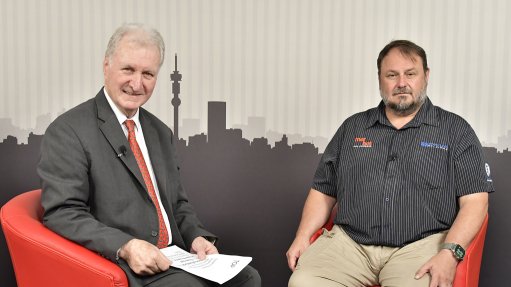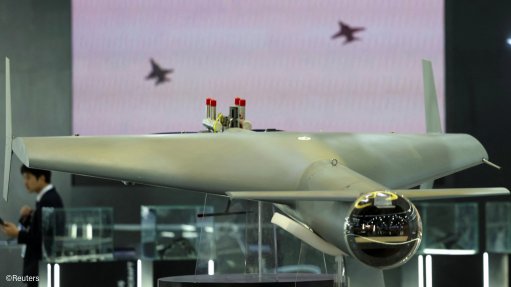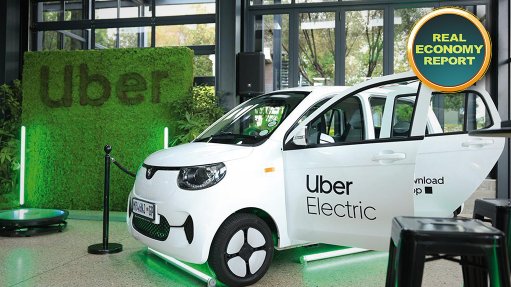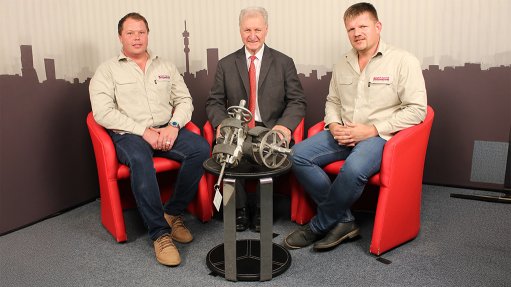Musina intermodal terminal expected to improve cross-border trade

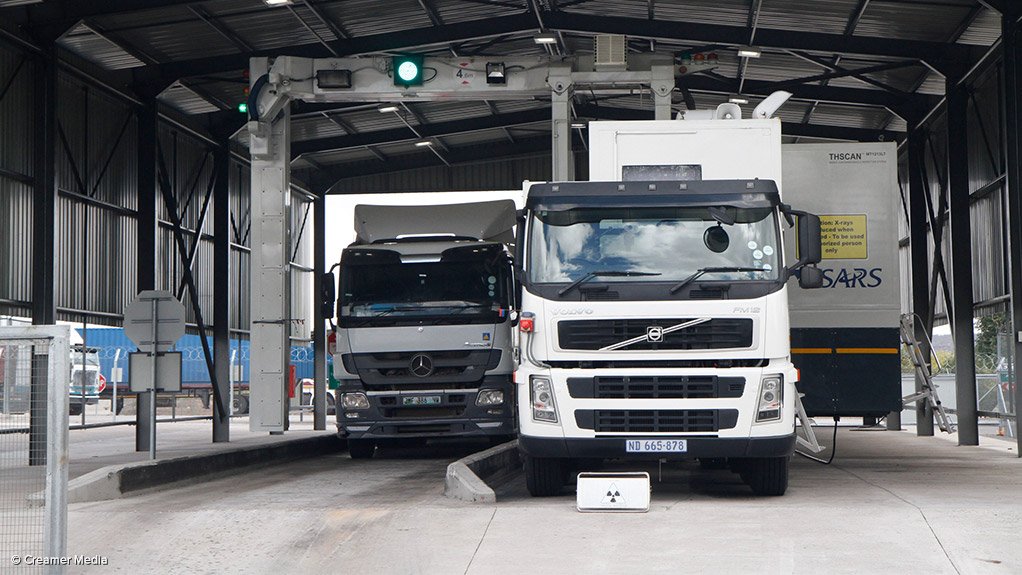
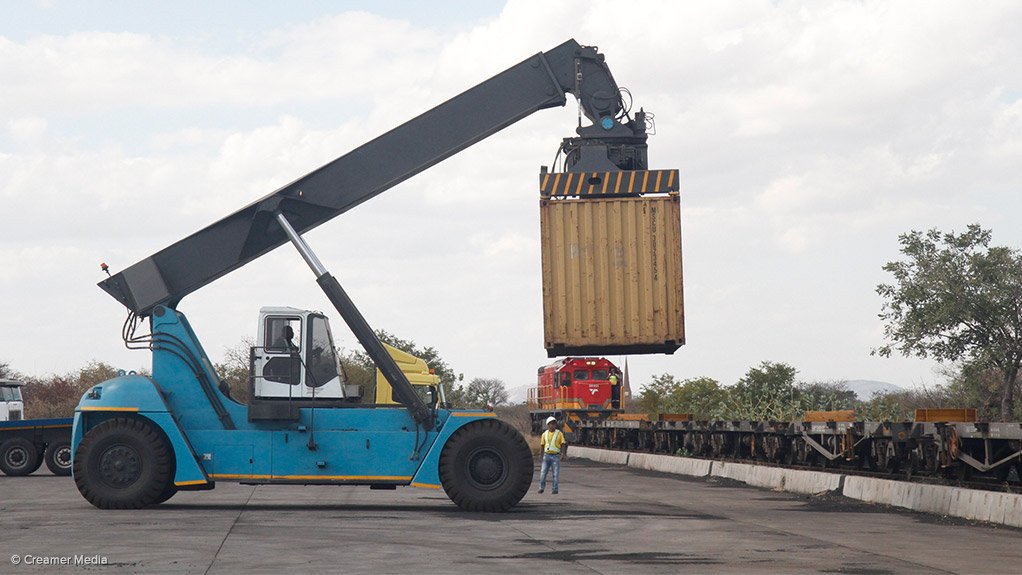
SARS XRAY SCANNER A customs cargo X-ray scanner scans a truck at the Beitbridge border post
Photo by Duane Daws
ROAD TO RAIL A reach stacker loads a container onto a waiting train as part of a demonstration of the MIT
Photo by Duane Daws
The Musina Intermodal Terminal (MIT), launched in June, is set to reduce the cost of cross-border trade, especially for bulk commodities, on the North–South trade corridor.
The terminal, about 3 km outside Musina and about 13 km from the Beitbridge border post, will serve to move commodities, including coal, copper, nickel and chrome, as well as citrus, maize and tomatoes, from road to rail, and vice versa.
Trade and Industry Minister Dr Rob Davies was taken on a tour to view the border post improvements and the intermodal terminal by police, customs officials and private sector partners.
A new feature at the border post is the customs cargo scanner – a mobile X-ray scanner that scans large trucks. Any anomalies detected are investigated and then referred to enforcement officials at the border post for short or full inspections.
The development of the first phase of the intermodal terminal is accompanied by the construction of the N1 bypass route for freight vehicles, says property development specialist Lionshare CEO Isaac Chalumbira, who gave the Minister a tour of the logistics developments around Musina.
The Minister was then taken to the Transnet Freight Rail Musina station, which will be part of the second phase of development.
As a demonstration of how bulk commodities will be handled, a container was offloaded from a truck by a reach stacker mobile crane and loaded onto a waiting train. Loads can be palletised, if necessary, for delicate loads such as agricultural produce, and driven by forklift into containers.
The terminal will operate as a bonded facility, which includes all South African Revenue Service customs inspections. Containers can be inspected, sealed and loaded onto trains, or from trains onto vehicles, and then be transported in bond to various terminals and to the Port of Durban, railway specialist company Barberry Group CEO Anand Moodliar explained to Davies during the demonstration.
Farmers and metallurgical industries had shown an interest in the initiative, and the project would seek to attract them back to rail transport, Barloworld Logistics Rail Supply Chain Solutions project executive Ash Ganasen explained to the Minister.
Key to attracting former and new clients to rail transport would be ensuring that the costs were lower than road transport costs and that delays were reduced, he emphasised. Bonded and containerised loads helped to reduce delays at port, as such containers could easily be stacked and then loaded onto freight ships.
Additionally, once the terminal was fully operational, the partners would optimise the system and further reduce costs, Ganasen highlighted.
Commercial transport vehicle manufacturer Scania announced that it would take over the old Transnet workshops at the Musina station to service Scania vehicles passing through Musina. The development of the workshops would also see local Musina residents trained and employed at the facility.
The Strategic Infrastructure Project 2, chaired by Davies, to improve the N3 Durban–Gauteng corridor also aims to move suitable commodities from road back to rail to improve logistics and mobility, Davies said during the launch, held at the completed first-phase 25 000 m2 MIT facility.
“The biggest impediment to better regional integration is the cost of transport logistics. The Musina-Makhado Special Economic Zone (SEZ), the MIT initiative and the Beitbridge border post upgrade are part of the North–South Corridor programme that aims to improve the infrastructure and reduce costs,” Davies said.
He added that, when the Musina-Makhado SEZ was up and running, it would be poised to attract investments estimated at R40-billion and would see the development of metallurgical facilities, including a power plant and coking coal, ferromanganese, steel and stainless steel facilities. It would create an estimated 20 000 jobs in the area, he said.
The MIT facility was partly financed by a Department of Trade and Industry grant, as part of the future Musina-Makhado SEZ, with additional funding from the Limpopo Economic Development Agency.
Davies praised the MIT public–private partnership project for seizing the initiative and establishing a viable and important component of the SEZ and improved trade in the region, and pledged the continuing support of the DTI. He also highlighted the support provided by provincial structures.
Musina could be a catalyst for trade in the region and was a vital transport node on the North–South Corridor to Zimbabwe, Zambia and the south of the Democratic Republic of Congo. It also allowed for access to Botswana, Mozambique and Malawi, said MIT chairperson Dr Morley Nkosi.
Logistics in domestic and international trade was central to economic growth and competitiveness, connecting people and companies to markets and opportunities, he averred, quoting World Bank Trade and Competitiveness Global Practice senior director Anabel Gonzalez.
“Improved connectivity, thus, is indispensable to regional trade and [is key] to making regional economic integration and free trade a reality.”
Article Enquiry
Email Article
Save Article
Feedback
To advertise email advertising@creamermedia.co.za or click here
Comments
Press Office
Announcements
What's On
Subscribe to improve your user experience...
Option 1 (equivalent of R125 a month):
Receive a weekly copy of Creamer Media's Engineering News & Mining Weekly magazine
(print copy for those in South Africa and e-magazine for those outside of South Africa)
Receive daily email newsletters
Access to full search results
Access archive of magazine back copies
Access to Projects in Progress
Access to ONE Research Report of your choice in PDF format
Option 2 (equivalent of R375 a month):
All benefits from Option 1
PLUS
Access to Creamer Media's Research Channel Africa for ALL Research Reports, in PDF format, on various industrial and mining sectors
including Electricity; Water; Energy Transition; Hydrogen; Roads, Rail and Ports; Coal; Gold; Platinum; Battery Metals; etc.
Already a subscriber?
Forgotten your password?
Receive weekly copy of Creamer Media's Engineering News & Mining Weekly magazine (print copy for those in South Africa and e-magazine for those outside of South Africa)
➕
Recieve daily email newsletters
➕
Access to full search results
➕
Access archive of magazine back copies
➕
Access to Projects in Progress
➕
Access to ONE Research Report of your choice in PDF format
RESEARCH CHANNEL AFRICA
R4500 (equivalent of R375 a month)
SUBSCRIBEAll benefits from Option 1
➕
Access to Creamer Media's Research Channel Africa for ALL Research Reports on various industrial and mining sectors, in PDF format, including on:
Electricity
➕
Water
➕
Energy Transition
➕
Hydrogen
➕
Roads, Rail and Ports
➕
Coal
➕
Gold
➕
Platinum
➕
Battery Metals
➕
etc.
Receive all benefits from Option 1 or Option 2 delivered to numerous people at your company
➕
Multiple User names and Passwords for simultaneous log-ins
➕
Intranet integration access to all in your organisation











